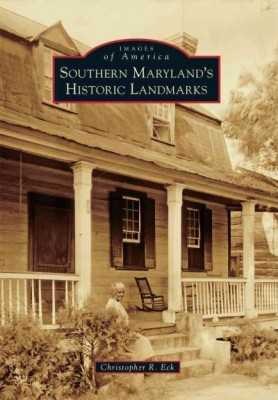| Southern Maryland's Historic Landmarks Contributor(s): Eck, Christopher R. (Author) |
|
 |
ISBN: 1467117226 ISBN-13: 9781467117227 Publisher: Arcadia Publishing (SC) OUR PRICE: $19.79 Product Type: Paperback - Other Formats Published: August 2016 |
| Additional Information |
| BISAC Categories: - History | United States - State & Local - Middle Atlantic (dc, De, Md, Nj, Ny, Pa) - Architecture | Buildings - Landmarks & Monuments - Photography | Subjects & Themes - Historical |
| Dewey: 975 |
| LCCN: 2016931628 |
| Series: Images of America (Arcadia Publishing) |
| Physical Information: 0.3" H x 6.5" W x 9.2" (0.70 lbs) 128 pages |
| Themes: - Geographic Orientation - Maryland |
| Descriptions, Reviews, Etc. |
| Publisher Description: Southern Maryland is made up of a collection of peninsulas covered in low rolling hills, fields, forests, swamps, and waterways leading to the Potomac River and the Chesapeake Bay. As such, this area enjoyed relative isolation and small population for over three centuries despite its proximity to cities such as Alexandria, Annapolis, Baltimore, and Washington. Those who did settle here developed a close connection to its farms, waterways, and natural remoteness. Southern Maryland, known for the state's earliest Colonial settlements, is composed of three of the state's oldest counties: St. Mary's, Charles, and Calvert. Although largely agricultural and maritime in outlook, this region was also the birthplace of the nation's ideal of religious freedom and many of its greatest citizens, including leaders of the Revolution, the early national government, and the state. Many of their homes and churches survive as historic landmarks, or their existence has been documented and preserved for posterity. |
Contributor Bio(s): Eck, Christopher R.: - Christopher R. Eck is a trained historian, archaeologist, attorney, and historic preservationist who has photographed many of southern Maryland's historic landmarks and selected photographs from the Historic American Buildings Survey and the Carnegie Survey of the Architecture of the South in the collections of the Library of Congress to tell this story. |